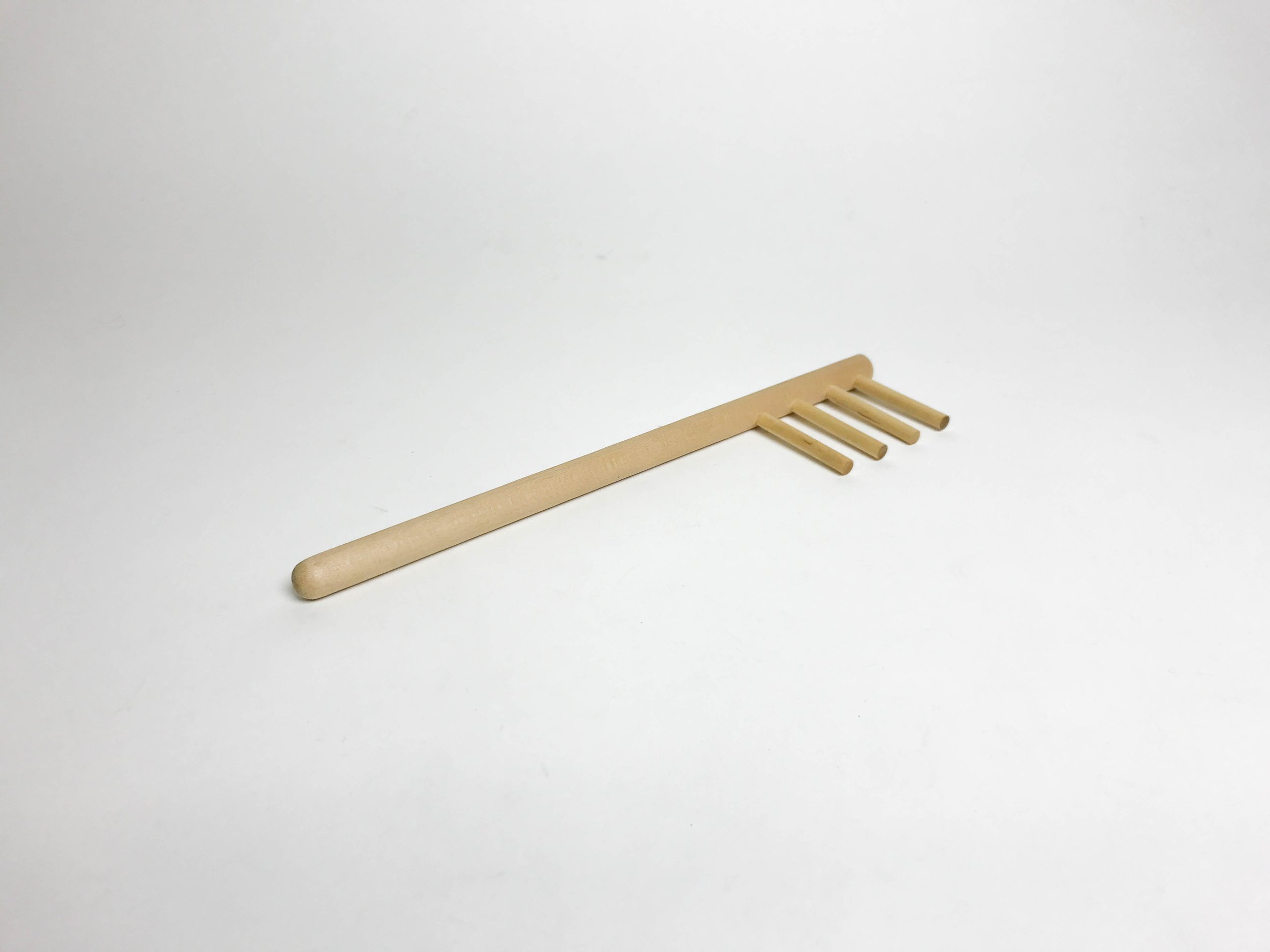Open-ended Objects
“Open-ended Objects” is the design concept for commodities that does not have specific way of use. This design concept aims to create active relationship between users and objects that users makes objects fitting into their needs and criteria instead of objects restricts users’ purposes and perspectives.
Today’s our everyday life surrounded by well-designed objects that are convenient, however these objects could standardize our actions and way of seeing objects. This standardization takes away our innate abilities of “problem solving”, “creative thinking”, and “individuality” from us. The concept of Open-ended Objects is aiming to create opportunities to have this active relationship in everyday life.
Open-ended Objectsは「決まった使い方がない日用品」というコンセプトでデザインされたモノたちです。使い方をボヤけさせることにより、モノが使う人の行動や見方を固定化させる受動的な関係から、使う人がモノを自分の目的や見方に合わせさせる、という相互的な関係を生み出すことを目的としています。現代の私たちの日常は、よくデザインされたモノたちの中で行われていると同時に、行動やモノの見方が画一的になっています。こういった画一化は私たち人間が本来持ち合わせている「問題解決能力」や「クリエイティブな発想」を行う機会を希薄にさせているだけでなく、個人ひとりひとりの違い「個性」というものさえ喪失させつつあります。
Open-ended Objectsはこの失われつつあるモノと人との関係を「日常」という誰もが共通で持つ場に生み出すことを目的とした「デザインのコンセプト」です。
Project Statement:
Open-ended Objects are the objects without “ready-made answers”.
“Ready-made answers” that restrict our perceptions and actions toward objects.
Our Perceptions and actions toward objects has been standardized by designers and makers.
Designers and makers who are commissioned to make objects that execute people’s actions.
Actions that are easy, reliable, fast, powerful, rational, convenient, and must answer our daily needs.
Open-ended Objects are the objects that create an alternate interaction between people and objects.
An alternate interaction that is originated from our human innate ability.
An innate ability to shift perspectives and take advantages of the local conditions of the built environment, reconciling what one sees, what is available, with one’s need.
Open-ended Objects are the empty vessels to be filled with individual “value” and “meaning”.
“Value” and “meaning”are formed by individual differences. Individual differences are formed by one’s environments, habitats, cultures, knowledges, and memories.
Open-ended Objects are the objects for individuals’ everyday-life.
Everyday life is the space where individuals perform problem solving for their needs.
Everyday life is the space where individuals form their behaviors.
Everyday life constitute an individual.
Individuals constitute a society.
Open-ended Objects are the instruments for change.
The change our society needs.
The change our society needs require phenomenal changes.
The phenomenal changes require little changes.
The little changes require individual awarenesses.
The individual awarenesses require habitude.
The habitude requires actions.
The actions requires opportunities.
Open-ended Objects are the opportunities.
Project Statement (和訳)
Open-ended Objectsは「用意された答え」を持たないモノです。
「用意された答え」は、私たちのモノに対する行動や見方を固定します。
このモノに対する行動や見方は、長年デザイナーや作り手によって画一化されてきました。
デザイナーや作り手は、ひとびとの行動をモノという媒体で体現化することを委託されてきました。
この体現化された行動は、簡単で信頼でき、速く、力強く、合理的で便利、そしてなにより我々のニーズに「答え」を与えてくれます。
Open-ended Objectsは人とモノの間にクリエイティブな関係を作り出すためのモノです。
このクリエイティブな関係は、私たち人間が生まれつき持つ能力に由来するものです。
この能力とは、モノが発する可能性や周囲の環境を観察し、自分の必要に間に合わせるという能力です。
Open-ended Objectsは”意味”や”価値”を入れるための「空っぽの器」です。
この「意味」や「価値」はひとりひとりの個性から生まれるものです。
そしてこの個性は、環境、習慣、文化、そして個人の知識や経験から生まれるものです。
Open-ended Objectsは日常生活のためのモノです。
日常生活という環境は、個人がそれぞれのニーズのために問題を解決を行う場です。
そして日常生活という環境は個人が「習慣」を形成する場でもあります。
日常生活とは個人の基盤です。
そして個人は社会の基盤でもあります。
Open-ended Objectsは「変化」を生み出すモノです。
今日の社会が必要とする「変化」です。
社会が必要とする変化は根本的な変化を必要とします。
根本的な変化は、小さな変化から生まれます。
小さな変化は、個人の意識を必要とします。
個人の意識は、習慣を必要とします。
習慣は行動の積み重ねを必要とします。
行動は、キッカケを必要とします。
Open-ended Objectsは、このキッカケなのです。























